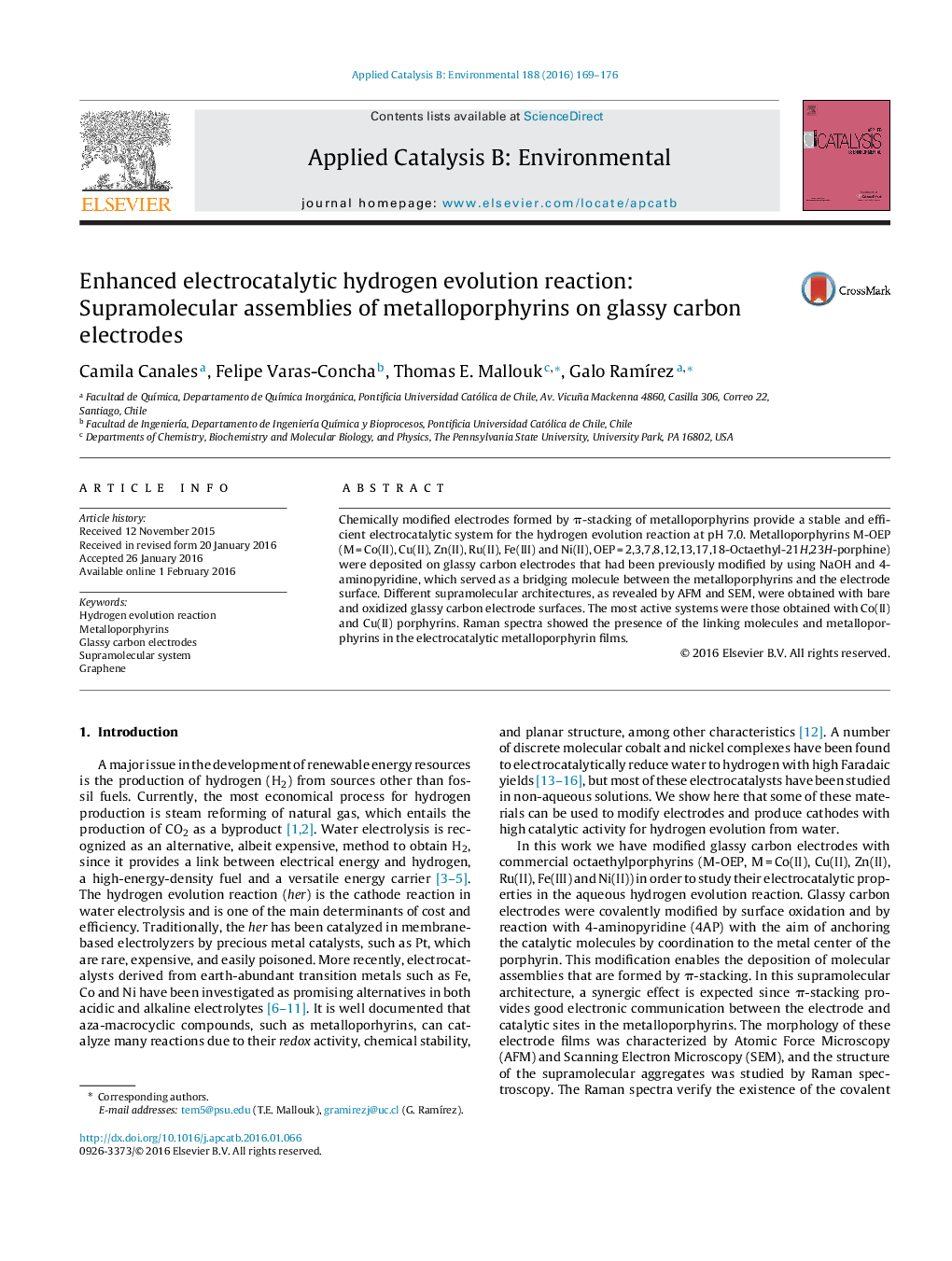| Article ID | Journal | Published Year | Pages | File Type |
|---|---|---|---|---|
| 45009 | Applied Catalysis B: Environmental | 2016 | 8 Pages |
•The modified electrodes are formed by π-stacking of metalloporphyrins which are stable and efficient systems for the hydrogen evolution reaction.•The modified electrodes are supramolecular systems, which are formed by bridge molecules and different commercial metalloporphyrins•The systems can reduce protons at lower potentials than other similar systems reported, with the aim to produce hydrogen gas in great quantities.•SEM and RAMAN studies performed in this work corroborate the modification of the carbon, gold and graphene surfaces.•The systems are achieved in a faster way than other similar systems reported. Then, a stable and efficient system can be approached in a short time.
Chemically modified electrodes formed by π-stacking of metalloporphyrins provide a stable and efficient electrocatalytic system for the hydrogen evolution reaction at pH 7.0. Metalloporphyrins M-OEP (M = Co(II), Cu(II), Zn(II), Ru(II), Fe(III) and Ni(II), OEP = 2,3,7,8,12,13,17,18-Octaethyl-21H,23H-porphine) were deposited on glassy carbon electrodes that had been previously modified by using NaOH and 4-aminopyridine, which served as a bridging molecule between the metalloporphyrins and the electrode surface. Different supramolecular architectures, as revealed by AFM and SEM, were obtained with bare and oxidized glassy carbon electrode surfaces. The most active systems were those obtained with Co(II) and Cu(II) porphyrins. Raman spectra showed the presence of the linking molecules and metalloporphyrins in the electrocatalytic metalloporphyrin films.
Graphical abstractFigure optionsDownload full-size imageDownload as PowerPoint slide
